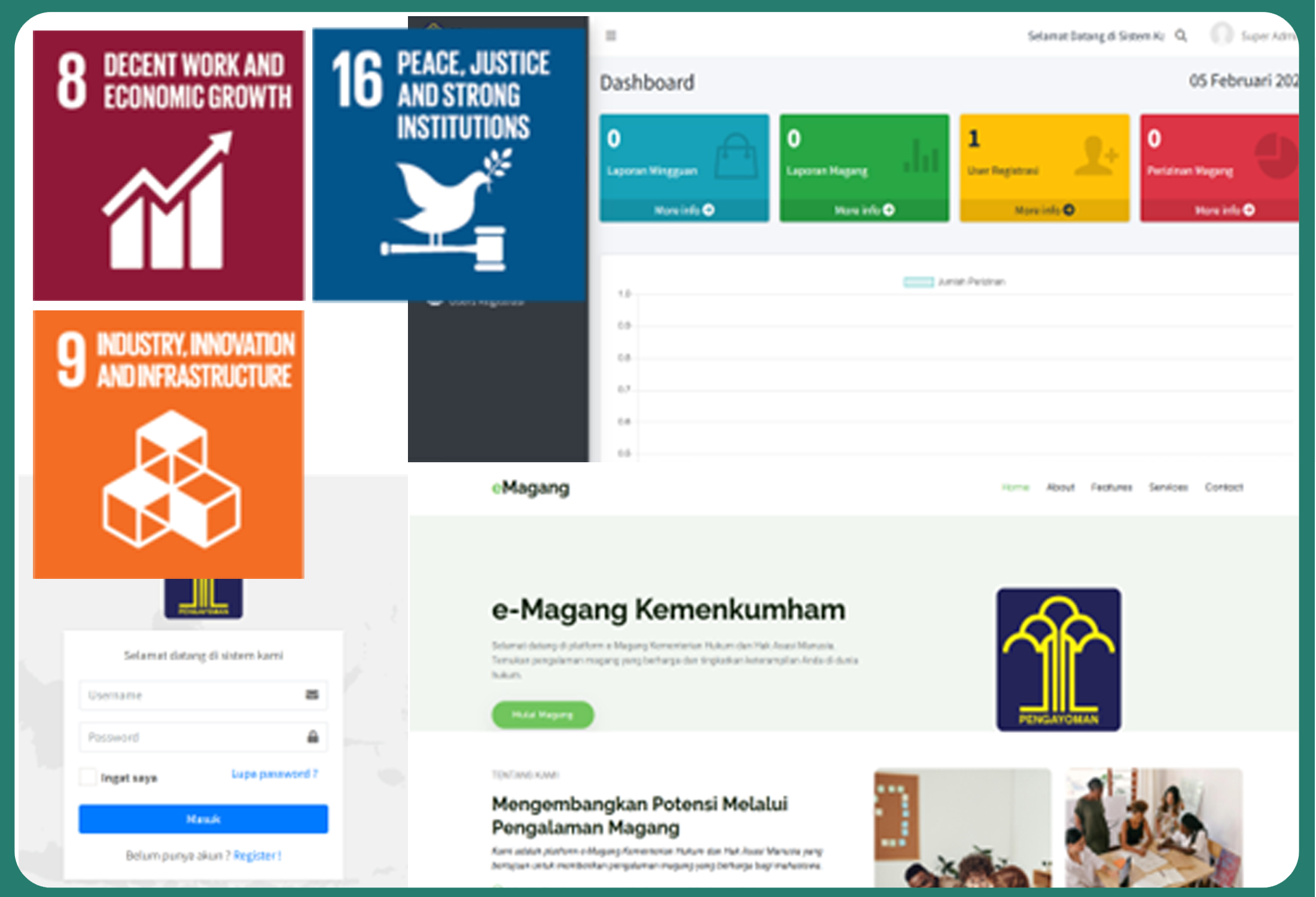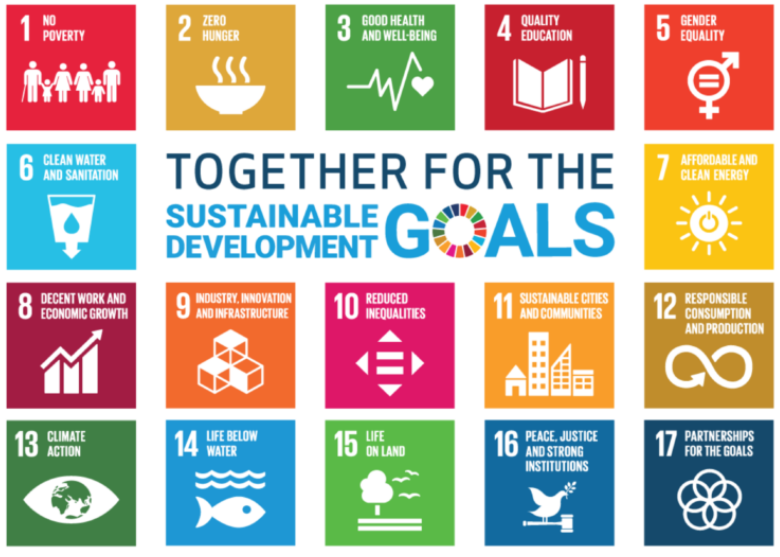Development of a Web-Based Internship Licensing System Using the Waterfall Model at the Ministry of Law and Human Rights
DOI:
https://doi.org/10.24036/javit.v5i1.251Keywords:
Internship Licensing System, Web Application, Waterfall Model, Laravel, Public Sector DigitalizationAbstract
The internship licensing process at the Ministry of Law and Human Rights (Kemenkumham) was previously managed through manual procedures, leading to inefficiencies such as delayed processing, data redundancy, and lack of real-time status tracking. This study aimed to develop a web-based internship licensing system to improve administrative efficiency, transparency, and user experience. The development process employed the waterfall model, covering five stages: requirement analysis, design, development, testing, and maintenance. The system was implemented using Laravel for the backend, Flutter for the frontend, and MySQL for the database. Key features include digital permit submission, weekly and final report uploads, role-based dashboards, and real-time status notifications. System validation involved black-box testing and expert evaluation using a 5-point Likert scale, yielding a 94.66% feasibility score categorized as very feasible. The results demonstrate that the application fulfills core functional requirements and addresses the previously identified administrative limitations. The study concludes that the system is effective for managing internship processes in public institutions. Future improvements include broader system integration with academic information systems and enhanced mobile compatibility.
Downloads
References
A. Shibambu and M. Ngoepe, “Enhancing service delivery through digital transformation in the public sector in South Africa,” Glob. Knowledge, Mem. Commun., vol. 74, no. 11, pp. 63–76, 2024, https://doi.org/10.1108/GKMC-12-2023-0476.
F. Kitsios, M. Kamariotou, and A. Mavromatis, “Drivers and Outcomes of Digital Transformation: The Case of Public Sector Services,” Inf., vol. 14, no. 1, p. 43, Jan. 2023, https://doi.org/10.3390/info14010043.
M. A. Javed et al., “Design and Implementation of Enterprise Office Automation System Based on Web Service Framework & Data Mining Techniques,” J. Data Anal. Inf. Process., vol. 12, no. 4, pp. 523–543, Sep. 2024, https://doi.org/10.4236/JDAIP.2024.124028.
J. J. P. Latupeirissa, N. L. Y. Dewi, I. K. R. Prayana, M. B. Srikandi, S. A. Ramadiansyah, and I. B. G. A. Y. Pramana, “Transforming Public Service Delivery: A Comprehensive Review of Digitization Initiatives,” Sustain. , vol. 16, no. 7, p. 2818, Apr. 2024, https://doi.org/10.3390/su16072818.
Z. Babar, R. Paul, ; Md, A. Rahman, and ; Tonmoy Barua, “A Systematic Review of Human-AI Collaboration in It Support Services: Enhancing User Experience and Workflow Automation,” J. Sustain. Dev. Policy, vol. 1, no. 01, pp. 65–89, Apr. 2025, https://doi.org/10.63125/GRQTF978.
L. Assalaarachchi, T. Rambukwella, G. Ranasinghe, K. Silva, and C. Hewagamage, “Streamlining the internship supervision and evaluation through digital transformation,” Educ. Inf. Technol., vol. 30, no. 1, pp. 1073–1088, Jan. 2024, https://doi.org/10.1007/s10639-024-13158-0.
R. Fauzi, H. A. Rosyid, and H. W. Herwanto, “Digitalization of information systems and educational laboratory management in higher education institutions,” Bull. Soc. Informatics Theory Appl., vol. 8, no. 2, pp. 260–270, Dec. 2024, https://doi.org/10.31763/BUSINTA.V8I2.740.
K. Ngcobo, S. Bhengu, A. Mudau, B. Thango, and M. Lerato, “Enterprise Data Management: Types, Sources, and Real-Time Applications to Enhance Business Performance - A Systematic Review,” Preprints, Sep. 2024, https://doi.org/10.2139/SSRN.4968451.
A. S. Rao et al., “Real-time monitoring of construction sites: Sensors, methods, and applications,” Autom. Constr., vol. 136, p. 104099, Apr. 2022, https://doi.org/10.1016/J.AUTCON.2021.104099.
R. Rani, N. Kumar, and M. Khurana, “Redundancy elimination in IoT oriented big data: a survey, schemes, open challenges and future applications,” Cluster Comput., vol. 27, no. 1, pp. 1063–1087, Feb. 2024, https://doi.org/10.1007/s10586-023-04209-1.
E. A. Miller, T. David, R. A. Koenig, L. Frankart, and L. M. Caldas, “Applying Entrustable professional activities to prescription verification activities in two skills-based laboratory courses,” Curr. Pharm. Teach. Learn., vol. 14, no. 7, pp. 892–899, Jul. 2022, https://doi.org/10.1016/j.cptl.2022.06.017.
F. Malik and N. Akbar, “The development of a web-based internship information sys-tem at DLHK-DIY using the waterfall method,” Matrix J. Manaj. Teknol. dan Inform., vol. 14, no. 2, pp. 84–97, Jul. 2024, https://doi.org/10.31940/MATRIX.V14I2.84-97.
M. Sudarma, S. Ariyani, and P. A. Wicaksana, “Implementation of the Rational Unified Process (RUP) Model in Design Planning of Sales Order Management System,” INTENSIF J. Ilm. Penelit. dan Penerapan Teknol. Sist. Inf., vol. 5, no. 2, pp. 249–265, Aug. 2021, https://doi.org/10.29407/intensif.v5i2.15543.
A. E. H. Berjawi, S. L. Walker, C. Patsios, and S. H. R. Hosseini, “An evaluation framework for future integrated energy systems: A whole energy systems approach,” Renew. Sustain. Energy Rev., vol. 145, p. 111163, Jul. 2021, https://doi.org/10.1016/j.rser.2021.111163.
M. I. S. B. Khairat, Y. Priyadi, and M. Adrian, “Usability Measurement in User Interface Design Using Heuristic Evaluation Severity Rating (Case Study: Mobile TA Application based on MVVM),” 2022 IEEE 12th Annu. Comput. Commun. Work. Conf. CCWC 2022, pp. 974–979, 2022, https://doi.org/10.1109/CCWC54503.2022.9720876.
M. Abbas, R. Rioboo, C. B. Ben-Yelles, and C. F. Snook, “Formal modeling and verification of UML Activity Diagrams (UAD) with FoCaLiZe,” J. Syst. Archit., vol. 114, p. 101911, Mar. 2021, https://doi.org/10.1016/j.sysarc.2020.101911.
M. Malinova and J. Mendling, “Cognitive Diagram Understanding and Task Performance in Systems Analysis and Design,” MIS Q., vol. 45, no. 4, pp. 2101–2158, Dec. 2021, https://doi.org/10.25300/misq/2021/15262.
S. Al-Fedaghi, “UML Sequence Diagram: An Alternative Model,” Int. J. Adv. Comput. Sci. Appl., vol. 12, no. 5, pp. 635–645, May 2021, https://doi.org/10.14569/IJACSA.2021.0120576.
I. Mouakher, F. Dhaou, and J. C. Attiogbé, “Event-Based Semantics of UML 2.X Concurrent Sequence Diagrams for Formal Verification,” J. Comput. Sci. Technol., vol. 37, no. 1, pp. 4–28, Feb. 2022, https://doi.org/10.1007/s11390-021-1673-5.
G. Lăzăroiu et al., “Digital twin-based cyber-physical manufacturing systems, extended reality metaverse enterprise and production management algorithms, and Internet of Things financial and labor market technologies in generative artificial intelligence economics,” Oeconomia Copernicana, vol. 15, no. 3, pp. 837–870, Sep. 2024, https://doi.org/10.24136/OC.3183.
J. Camara, J. Troya, J. Montes-Torres, and F. J. Jaime, “Generative AI in the Software Modeling Classroom: An Experience Report with ChatGPT and UML,” IEEE Softw., vol. 22, no. 3, pp. 781–793, Jun. 2024, https://doi.org/10.1109/MS.2024.3385309.
N. P. Essien and A. G. Effiong, “Innovation and Standard Adoption of Software Development in a Global Setting,” Asia-Africa J. Recent Sci. Res., vol. 4, no. 1, pp. 2814–0400, Aug. 2024, https://doi.org/10.5281/zenodo.12802812.
M. N. Habib, W. Jamal, U. Khalil, and Z. Khan, “Transforming universities in interactive digital platform: case of city university of science and information technology,” Educ. Inf. Technol., vol. 26, no. 1, pp. 517–541, Jan. 2021, https://doi.org/10.1007/s10639-020-10237-w.
Q. D. Pham, N. N. Dao, T. Nguyen-Thanh, S. Cho, and H. C. Pham, “Detachable Web-Based Learning Framework to Overcome Immature ICT Infrastructure Toward Smart Education,” IEEE Access, vol. 9, pp. 34951–34961, 2021, https://doi.org/10.1109/ACCESS.2021.3062371.
A. Alam, “Cloud-Based E-Learning: Development of Conceptual Model for Adaptive E-Learning Ecosystem Based on Cloud Computing Infrastructure,” Commun. Comput. Inf. Sci., vol. 1673 CCIS, pp. 377–391, 2022, https://doi.org/10.1007/978-3-031-21385-4_31.
S. Researcher, D. Umair, and A. Khan, “Enhancing onboarding with AI : designing a modern conversational agent for onboarding,” 2024, Accessed: Jul. 02, 2025. [Online]. Available: https://lutpub.lut.fi/handle/10024/167606.
W. Luctama-compere, “Human capital management technology implementation to support human resource teams,” pp. 1–113, 2024.
G. Sai Teja, D. Deepak Manchala, G. Bhargav, and M. K. Naga Sailaja, “Empowering Enterprise Development by Building and deploying Admin Dashboard using Refine Framework,” Apr. 2024, Accessed: Jul. 02, 2025. [Online]. Available: https://arxiv.org/pdf/2404.10086.
N. Arshad, T. Butt, and M. Iqbal, “A Comprehensive Framework for Intelligent, Scalable, and Performance-Optimized Software Development,” IEEE Access, 2025, https://doi.org/10.1109/ACCESS.2025.3564139.
U.S Department of Education, “K-12 Digital Infrastructure Brief : Adequate and Future Proof,” Off. Educ. Technol. US Dep. Educ., pp. 1–20, Aug. 2023, Accessed: Jul. 02, 2025. [Online]. Available: https://tech.ed.gov/files/2023/08/FINAL_Adequate_FutureProof.pdf.
E. S. Vorm and D. J. Y. Combs, “Integrating Transparency, Trust, and Acceptance: The Intelligent Systems Technology Acceptance Model (ISTAM),” Int. J. Hum. Comput. Interact., vol. 38, no. 18–20, pp. 1828–1845, Dec. 2022, https://doi.org/10.1080/10447318.2022.2070107.

Downloads
Published
How to Cite
Issue
Section
License
Copyright (c) 2025 Sintia Okta Rina, Resmi Darni, Vera Irma Delianti, Rizkayeni Marta

This work is licensed under a Creative Commons Attribution 4.0 International License.










